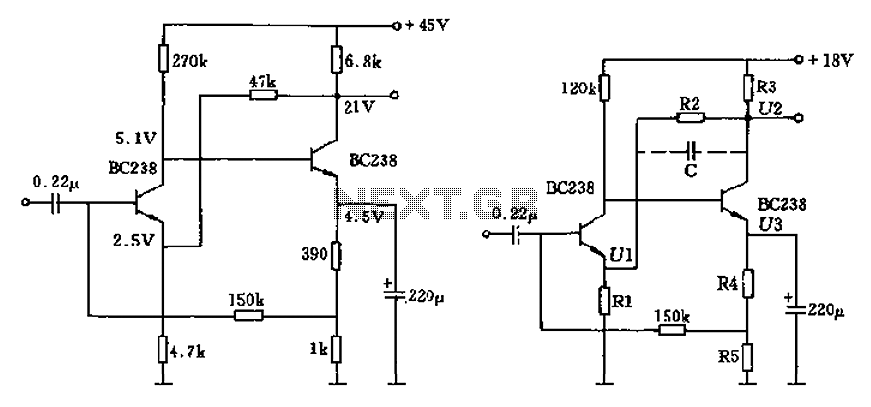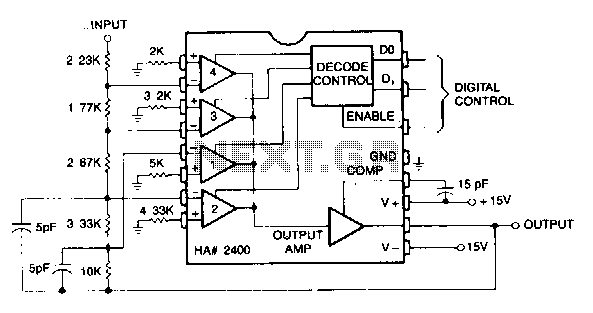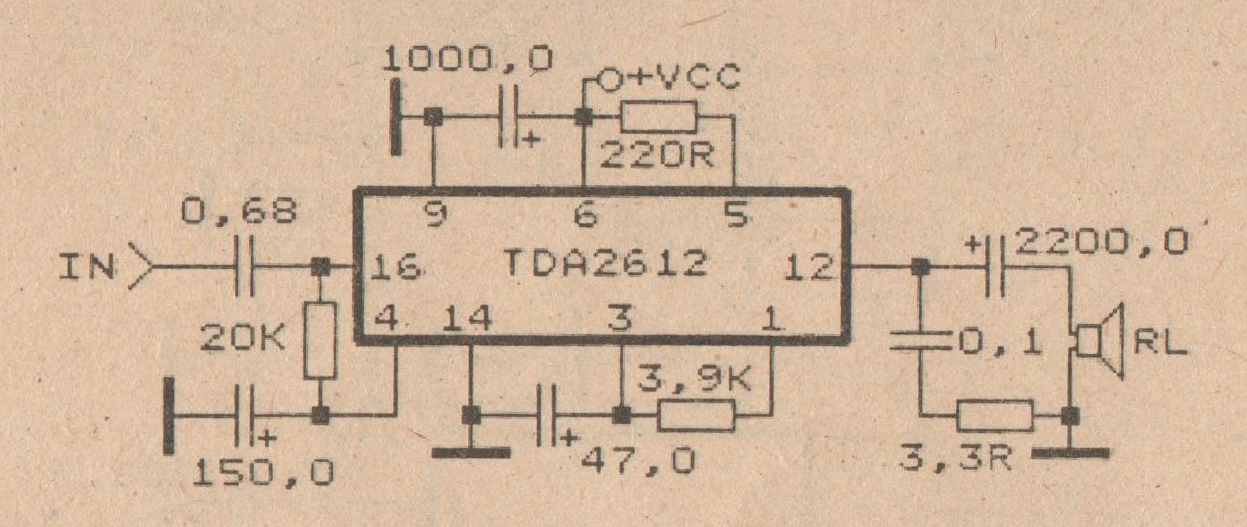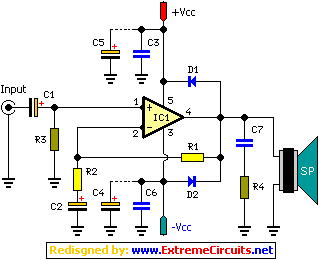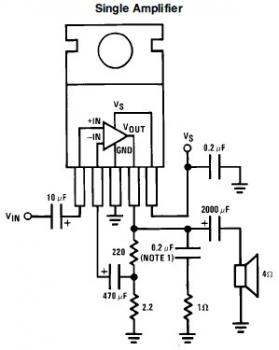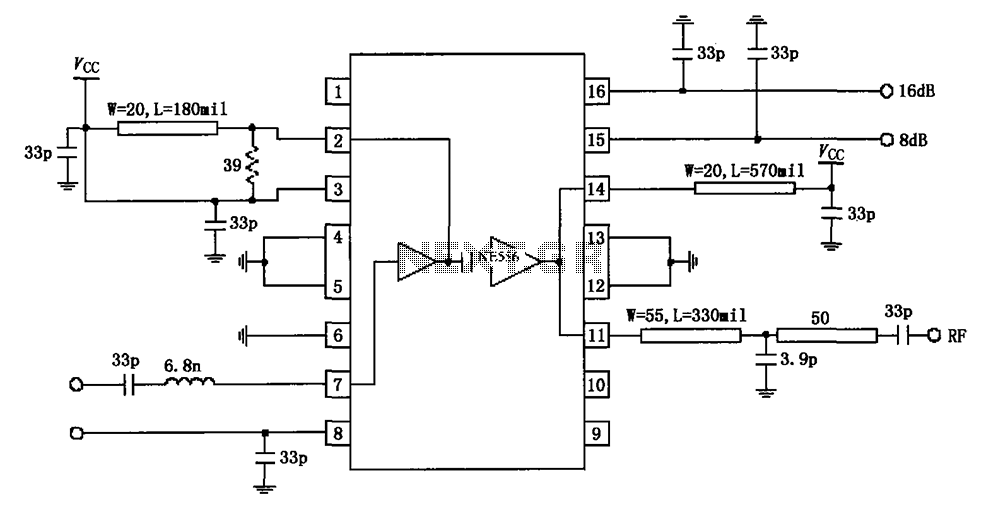
30W Hybrid amplifier 01

The pre-amplifier stage consists of an inverter made up of two 6F2 pentodes, with pin configurations illustrated in Figure 2.9. The electrical parameters are detailed in Table 2-3. The 6F2 tubes are well-regarded for their intensity and resolving power, surpassing that of the 6GH8. The circuit employs two parallel-connected 6F2 triodes in a single-ended push-pull (SRPP) configuration, which is designed to achieve high dynamics, low distortion, and low output impedance. Due to internal force limitations, the SRPP circuit cannot directly drive an amplifier. To address this, a native 6F2 five-pole tube is utilized in a common cathode differential inverter circuit, commonly known as a long-tail inverter. This configuration compensates for the internal forces of the SRPP, ensuring that the influence of the common cathode resistance is balanced. Resistors R6 and R7 are not matched in value, as depicted in circuit diagram 2-10, to achieve gain balance between the upper and lower inverted tubes. The operating point of the SRPP circuit is set within the linear segments of the diode output characteristics (J God F3mA), while the long-tail circuit operates at I, o F2.5mA.
The described pre-amplifier stage utilizes a dual 6F2 pentode configuration to enhance audio signal amplification while minimizing distortion. The SRPP (Shunt Regulated Push Pull) topology is particularly effective for achieving a high dynamic range and low output impedance, which are critical parameters for audio applications.
In this configuration, the 6F2 tubes are arranged in parallel, allowing for increased current handling and improved linearity. The SRPP circuit, while effective, faces limitations in directly driving subsequent amplifier stages due to internal feedback forces. To mitigate this, the long-tail differential inverter is employed. This arrangement not only enhances the overall gain stability but also allows for better control of the output signal characteristics by balancing the load seen by the two triodes.
The choice of resistors R6 and R7, which are intentionally mismatched, plays a crucial role in achieving the desired gain balance between the two tubes. This design consideration ensures that variations in tube characteristics do not adversely affect the output performance. The operating points defined by the diode characteristics and the long-tail circuit parameters are critical for maintaining linear operation across the desired signal range.
Overall, this pre-amplifier stage design exemplifies a sophisticated approach to audio amplification, integrating advanced circuit topologies to achieve superior performance metrics.And the pre-amplifier stage inverter consisting of two three - 6F2 pentode act, the pins are distributed as shown in Figure 2.9, the electrical parameters such as the number sh own in Table 2-3. The tube quite famous, their intensity and resolving power are above 6GH8. The two split 6F2 triode connected in parallel single-ended push-pull SRPP (Shunt Regulated Push Pull) circuit in order to achieve high dynamic, low distortion, and low output impedance. SRPP circuit in the amplifier due to internal forces restrictions, it can not directly push amplifier.
The use of native 6F2 five pole tube portion connected to common cathode differential inverter circuit (often referred to as long-tail type inverter device ), to supplement the SRPP of internal forces in order to correct deficiencies stingy, make compensation long tail of the cathode influence public resistance, the load R6, R7 not get the same resistance (see circuit diagram 2-10), which aims to make the upper and lower inverted tube gain balance. SRPP circuit operating point is provided in three diode output characteristic linear segments (J God F3mA), long tail circuit I, o F2.5mA.
The described pre-amplifier stage utilizes a dual 6F2 pentode configuration to enhance audio signal amplification while minimizing distortion. The SRPP (Shunt Regulated Push Pull) topology is particularly effective for achieving a high dynamic range and low output impedance, which are critical parameters for audio applications.
In this configuration, the 6F2 tubes are arranged in parallel, allowing for increased current handling and improved linearity. The SRPP circuit, while effective, faces limitations in directly driving subsequent amplifier stages due to internal feedback forces. To mitigate this, the long-tail differential inverter is employed. This arrangement not only enhances the overall gain stability but also allows for better control of the output signal characteristics by balancing the load seen by the two triodes.
The choice of resistors R6 and R7, which are intentionally mismatched, plays a crucial role in achieving the desired gain balance between the two tubes. This design consideration ensures that variations in tube characteristics do not adversely affect the output performance. The operating points defined by the diode characteristics and the long-tail circuit parameters are critical for maintaining linear operation across the desired signal range.
Overall, this pre-amplifier stage design exemplifies a sophisticated approach to audio amplification, integrating advanced circuit topologies to achieve superior performance metrics.And the pre-amplifier stage inverter consisting of two three - 6F2 pentode act, the pins are distributed as shown in Figure 2.9, the electrical parameters such as the number sh own in Table 2-3. The tube quite famous, their intensity and resolving power are above 6GH8. The two split 6F2 triode connected in parallel single-ended push-pull SRPP (Shunt Regulated Push Pull) circuit in order to achieve high dynamic, low distortion, and low output impedance. SRPP circuit in the amplifier due to internal forces restrictions, it can not directly push amplifier.
The use of native 6F2 five pole tube portion connected to common cathode differential inverter circuit (often referred to as long-tail type inverter device ), to supplement the SRPP of internal forces in order to correct deficiencies stingy, make compensation long tail of the cathode influence public resistance, the load R6, R7 not get the same resistance (see circuit diagram 2-10), which aims to make the upper and lower inverted tube gain balance. SRPP circuit operating point is provided in three diode output characteristic linear segments (J God F3mA), long tail circuit I, o F2.5mA.
